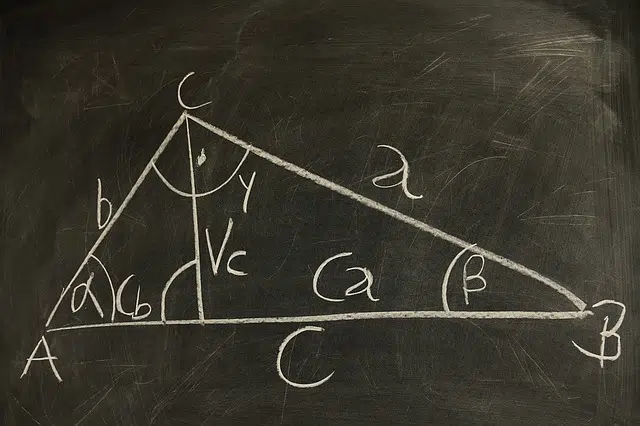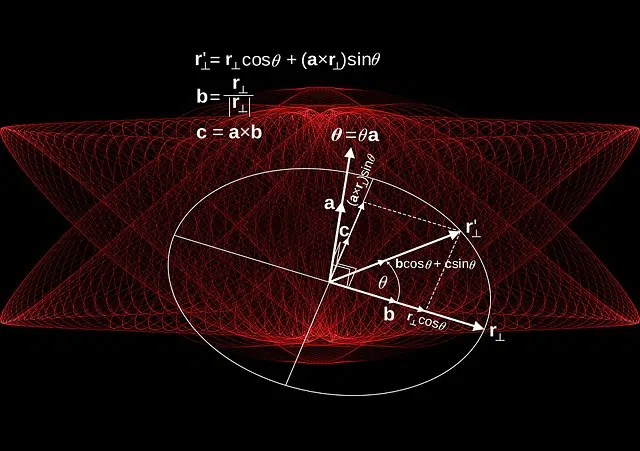
Adjacent angles share a vertex and a side.
An angle is a geometric figure that is formed with two rays that share the same vertex as their origin. Adjacent , for its part, is an adjective that qualifies what is located next to something.
Adjacent angles are those that share a side and the vertex , while the other two sides are opposite semilines . This definition allows us to infer that adjacent angles are also contiguous or consecutive angles (because they have a common side and the same vertex) and supplementary angles (the sum of both results in 180° ; that is, a straight angle ).
It is important to note that not all sources on this topic respect the requirement that both angles total 180°; That is to say, in many geometry texts the concept of adjacent angles is defined as any pair that has a side and vertex in common, without the need for them to be supplementary. For this reason, before consulting information in this regard, it is necessary to identify the convention to which it responds, to avoid contradictions or lack of consistency.
Properties of adjacent angles
Other properties of adjacent angles are that their cosines have the same value , although inverse signs, that is, their absolute value is the same; For example, if we take two adjacent angles, one of 120° and the other of 60°, the cosine of the first is equal to that of the second multiplied by -1. The sines of these angles, however, are equal.
The cosine is a concept belonging to trigonometry, and refers to the ratio between the adjacent leg of an acute angle that is part of a right triangle and its hypotenuse; In other words, we can say that the cosine of the angle α is equal to the division of its adjacent leg by the value of the hypotenuse. It should be noted that the result does not vary according to the characteristics of the right triangle, but is a function of the angle, as indicated by Thales' Theorem .
On the other hand is the sine , a function of trigonometry that consists of dividing the leg opposite an angle given by its hypotenuse.

Adjacent angles are also supplementary and contiguous or consecutive.
Some examples
If an angle of 44° is located next to an angle of 136° , with which it shares a side and the vertex, we can say that they are adjacent angles ( 44° + 136° = 180° ). This qualification affects both angles, without preventing the development of other classifications. The 44° angle, in addition to being adjacent to the other, is an acute angle . The angle of 136° , for its part, is adjacent to this acute angle, but at the same time it is an obtuse angle .
Two right angles (each 90° ) can also be adjacent angles. The requirement is always the same: they have to share a vertex and one side and the other two sides must be opposite rays. If we add both adjacent right angles, the result will be a straight angle ( 180° ).
Problems with adjacent angles
As with many other classifications in mathematics , the concept of adjacent angles can be applied to many different problems. Once we identify the type of angle we are facing, the next step is to turn to a reliable source to study all its known properties, and evaluate its usefulness for our project.
We can say that not always the two angles necessary to give life to this concept are expressly present, but many times we start from just one and imagine the other to access these properties , if this opens the doors to new solutions . In other words, we must not forget that these are concepts that are born from observation and theorization, which allow us to adapt reality to our needs.
